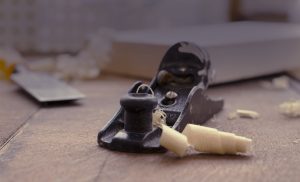The Joy of Hand Tools
There is nothing as enjoyable or satisfying for a craftsman as a good sharp hand tool. For a woodworker, the joy of a razor-sharp hand plane and the soft curl of wood that rolls up and springs away from the blade as the board is shaped and fitted is both a wonder and a delight.

The history of hand tools in America is a fascinating one. Beginning around 1870, industrialization sped up the advancements being made in technology with effects so influential that we still see them today. I still use my Stanley hand-planes, many of which have patents dating to before 1900. Tool making before the Civil War was essentially a cottage industry. Tools were hand-made locally and were most often made for a specific task and customized for the individual craftsman; think clothes before ready-made. After the Civil War and by the start of 1870s, tools started to become mass manufactured and over the next 40 years, many wonderful and excellent hand tools were made.
However, after 1950 the quality and integrity of fine woodworking tools began to tail off. The Great Depression and WWII changed the quality of hand tools with the rise of the DIY market after the war. Cheap and flimsy tools were being produced that were perfect for the garage woodworker or dad who rarely used tools. Then by the 1960s and 1970s, the rise of the electric powered tools such as saws and pneumatic nail guns had taken over the market. The specialized hand tools had lost their importance. Even today it is difficult to find good woodworking hand tools outside of specialty stores.

While recently working on a boat project here in our shop, I’ve been reminded of the simple joy that comes with a sharp plane blade and a comfortable handle. Sharp chisels and well-made hand planes are proving crucial to the success of the restoration of this 1950 Century Sea Maid. Hand tools offer a level of precision and calibration that has been lost with electrical tools. The tuning and sensitivity of a hand plane is measured in the 1000th of an inch, while most power tools are measured by the 1/8th of an inch. That is a difference of 125 times in volume for every cut. Fitting the boat planks, smoothing parts and faring in the key lines that will move the boat through the water, would be impossible without our quality hand tools.
Today, the goal of the modern woodworker is to rediscover the lessons and rules of the past. We have rich traditions, long-lasting skills and the forgotten rules of building. Yet there is still so much to learn and many great discoveries ahead. It all starts with a good hand-tool and rediscovering the joy of working with your hands.
-B

